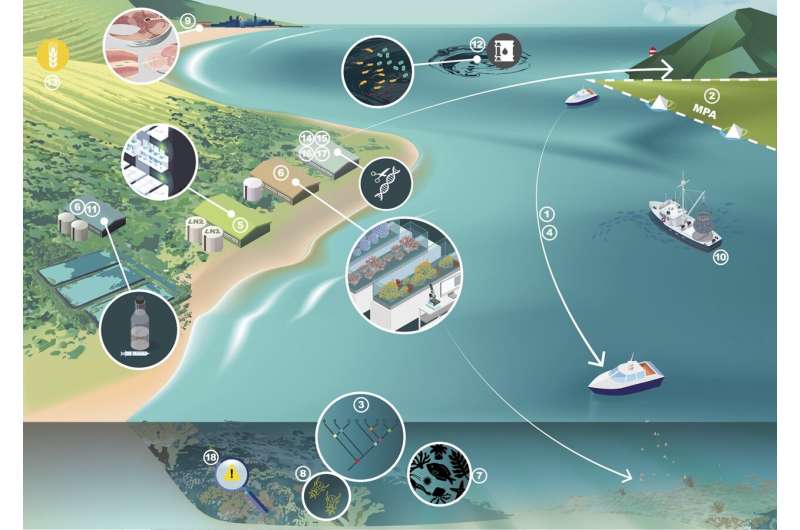Advanced genomic approaches hold promise for marine conservation

Genetic and genomic technologies have tremendous potential for protecting marine life, but are currently being underutilized, argue Madeleine van Oppen of the Australian Institute of Marine Science and the University of Melbourne and Melinda Coleman with the New South Wales Department of Primary Industries, Australia in an essay publishing on October 17 in the open access journal PLOS Biology.
No part of our oceans is left untouched by humans, with vital ecosystems such as coral reefs, seagrass meadows and kelp forests all declining due to climate change and other human disturbances. In their essay, van Oppen and Coleman propose that the use of genetic and genomic approaches holds huge promise in advancing marine conservation and restoration, through both traditional strategies, and more recent developments, such as assisted evolution.
For example, DNA sequencing can now identify illegally harvested seafood products to protect threatened species. DNA in seawater samples, called environmental DNA, is emerging as a more feasible alternative or complement to traditional SCUBA-based surveys of marine biodiversity, and can also be used to monitor disease outbreaks and the spread of invasive species. Furthermore, genomic techniques exist that could help fisheries to keep tabs on fish stocks and to monitor how fish are adapting to stressors in their environment.
Looking to the future, van Oppen and Coleman point to multiple developing technologies that could benefit ocean life. Just like humans take probiotics for gut health, specific bacterial and fungal species could be identified or engineered to benefit the health of wildlife, like corals. Synthetic biology could enable the manufacturing of products in the lab that previously were harvested from marine ecosystems, like horseshoe crab blood, and genome editing could be used to help organisms adapt more rapidly to their changing environment. Although still controversial, there is also the possibility of using gene drives, which cause damaging genes to spread through a population, to eradicate invasive species.
The effective use of these approaches will require the development of suitable online platforms and enhanced collaboration between various stakeholders of marine ecosystems, and the authors call on funding agencies to support these efforts. They conclude that genomic technologies could considerably improve conservation and restoration efforts, but only if the gap can be bridged between genomics experts and marine biodiversity managers.
van Oppen says, "Genetic/genomic approaches can transform how we protect, manage and conserve marine life and can assist in boosting the resilience of marine species to climate change."
More information: Advancing the protection of marine life through genomics, PLoS Biology (2022). DOI: 10.1371/journal.pbio.3001801
Journal information: PLoS Biology
Provided by Public Library of Science





















